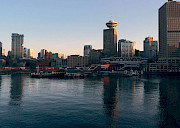The Who, Will and When of Broadband
June 1, 2011
Source: Internet Telephony Magazine
The Infrastructure Peering column is off to a great start in the mission to properly educate the masses one at a time and all at once. The last two articles covered the Why and How of Broadband, respectively, explaining what the real motivations are for towns, counties and countries around the world to invest in fiber infrastructure to create broadband and how, absent government funds, the investment is financed through a pure commercial model. Now that the components have been laid out they are more easily understood and acted upon. For those that have yet to take action it might help and add a little bit of motivation to take a look at some of the broadband speed statistics from around the world.
The Organization for Economic Cooperation and Development, based in Paris, keeps tabs on countries across a wide variety of issues including broadband. Over the past several years its ranking of countries based upon broadband speed statistics has become a trusted source that many rely on as a basis for their own views.
As noted on the OECD website, this organization provides a forum in which governments can share experiences and seek solutions to common problems.
“We work with governments to understand what drives economic, social and environmental change,” the site says. “We measure productivity and global flows of trade and investment. We analyze and compare data to predict future trends. We set international standards on all sorts of things, from the safety of chemicals and nuclear power plants to the quality of cucumbers.”
The truth is, though, that the statistics are very misleading. Average is also a term that is suspect as it only takes in to account the speeds that are advertised and then added together and divided by that number, and not the total area that those speeds are available in and the number of people that they cover. This concept is known as population density.
Fiber underpins all meaningful broadband networks, and the effective deployment of fiber in any given area is directly related to geography and population, or said another way, the cost to build and number of customers/revenue opportunities. To get a better, more accurate picture of where the United States actually ranks in terms of broadband speeds based on population density a whole new set of data is required.
Clearly the United States ranks in first place for overall size and first place for overall population towering above the other eighteen countries ahead of us on the OECD list. That is a lot of build cost to cover, but also a lot of revenue opportunity assuming 20 megabits per user at $5 to $10 per megabit per month. Even with the size and population disparity of the United States against the others on the list, the U.S. still has a respectable speed ranking. Probably the most misleading term of all is country. How can the United States be placed on a list of countries behind Luxembourg when the underlying principle is based on a physical infrastructure investment? It is nowhere near equal.
Making the reason and path clear for those that still need to create broadband networks is the key to opening up a logical investment of time and energy and spurring on those that have the will to put forth the effort now, or at least as soon as possible thus answering the who, will and when.
Hunter Newby (News - Alert), CEO Allied Fiber writes the Infrastructure Peering column for TMCnet To read more of Hunter's articles, please visit his columnist page.
Edited by Jennifer Russell




